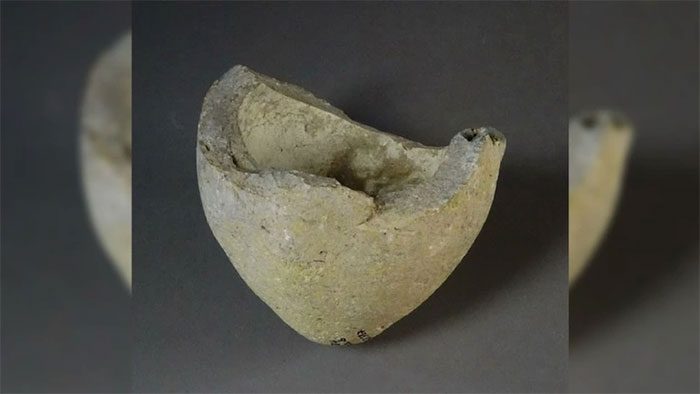Chemical composition analysis reveals that the contents of the ceramic vessel contain explosive materials.
Medieval ceramic containers were commonly used for various purposes, such as holding oil, medicine, mercury, beer, and wine…

Fragments of a ceramic vessel may represent the original version of a hand grenade.
However, in a recent study, scientists were surprised to discover fragments of a ceramic vessel that could be the original version of a hand grenade, used by warriors during the Crusades approximately 900 years ago.
Typically, hand grenades require three essential components: first, a fuel for combustion; second, an oxidizer to facilitate the burning of the fuel; and third, a sealed container to create pressure, allowing the reaction to continue until an explosion occurs.
According to research published in the journal PLOS One, the structure of the ancient conical vessel includes a round body similar to a vase, with a small hole at the top that could generate sufficient pressure for the reaction. Additionally, the inside of the vessel shows traces of other explosive materials, including a mixture of vegetable oil and animal fat, along with sodium nitrate, calcium nitrate, potassium nitrate, and magnesium nitrate.
Researchers suspect that similar grenades may have even included components that could alter their explosive properties, such as magnesium, to produce a blinding flash.
However, it remains unclear exactly how the explosive materials would be ignited. Carney Matheson, a molecular archaeologist at Griffith University in Queensland, Australia, speculates that the components could be detonated upon impact. Meanwhile, the research team suspects that medieval warriors inserted a fuse into the vessel through a small crack, then secured it with pitch.
Previously, records indicated that any early handheld explosive device required gunpowder, using charcoal as fuel and potassium nitrate as the oxidizer, but this new study may change scientists’ perspectives on this deadly weapon.

















































